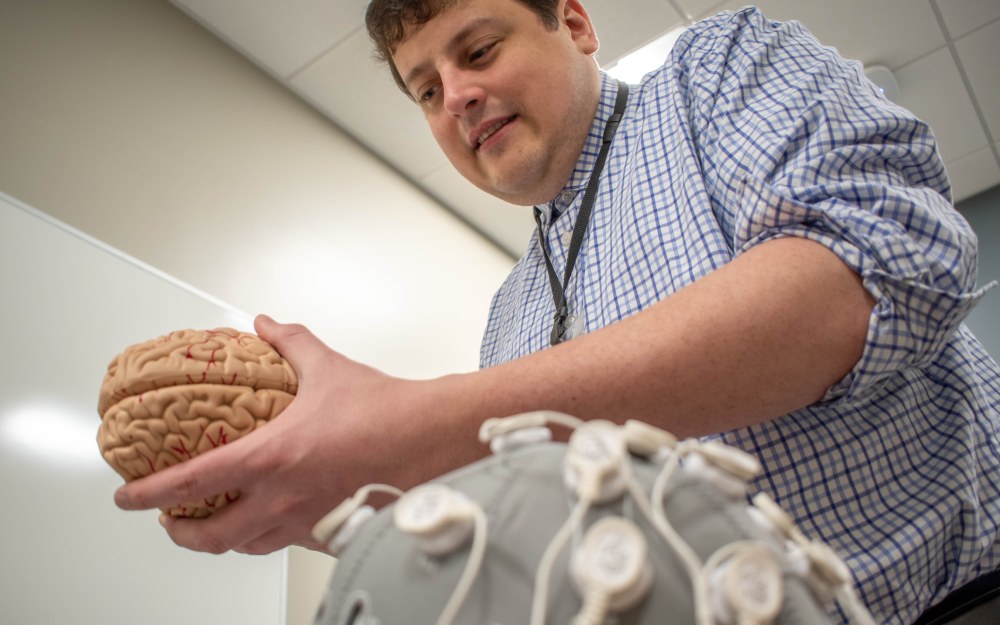
Family-based therapy coming soon to Rogers Eating Disorder Recovery for child, adolescent patients
01/23/20 11:44:am
In pursuit of our goals to provide high-quality, evidence-based care, child and adolescent Eating Disorder Recovery will soon integrate family-based treatment (FBT) principles into our current practice of cognitive behavioral therapy (CBT).
FBT is a leading treatment for youth with eating disorders that focuses on empowering parents and caregivers. Nicholas Farrell, PhD, campus clinical director and clinical supervisor for Eating Disorder Recovery, says that this change has been in the works for a few years, and the goal of increasing family involvement was a major reason for bringing FBT to Rogers.
“That was something we saw as an area for growth and improvement, even in residential care where kids aren’t living with their primary caregivers at the time,” Dr. Farrell says.
In the past, some families have offered feedback that they didn’t feel fully comfortable caring for their child after treatment. Dr. Farrell believes that the increased experiential learning and skills practice for parents will gain through FBT will help bridge the gap between treatment and the home environment.
“The major objectives are to arm parents with skills for navigating challenges with their child, and to empower parents to take charge at home and not let the eating disorder control the family and their lifestyle,” he says. “Too often we have parents come in who have been disempowered, and the eating disorder has taken over things like what meals can be served. It’s really about helping caretakers gradually restore a greater sense of control over their household.”
How will FBT involve caretakers?
While it’s not possible for a parent to have complete control over a child’s eating habits during residential care, Dr. Farrell says that there are a number of ways parents will be involved.
“Rather than parents just receiving routine updates, they will be involved more in therapeutic decision making,” he says. “When we’re creating a weekly menu for a patient, they’ll have input on what that might include. For caregivers who are not in close geographic proximity, we can consider using technology to bring them in remotely for greater involvement in treatment activities, such as food selection or even having meals ‘together’ via video.”
FBT has traditionally been used in outpatient care. It was originally developed to avoid the need for the child to be removed from their home environment for treatment. However, Dr. Farrell says this has started to change, and FBT has been adapted over the last 10 years to successfully fit into a higher level of care. Rogers will utilize FBT in residential, partial hospitalization, and intensive outpatient care.
Training for FBT started in mid-September with an eight-hour workshop facilitated by Daniel Le Grange, PhD, a leading expert in FBT and professor at University of California, San Francisco. Clinicians and leadership in eating disorder programs across our system have since attended weekly remote consultation sessions with Dr. Le Grange to go over cases, discuss key principles and interventions, and further preparation for the rollout of FBT at Rogers.
Results from our FBT pilot in Minneapolis
For over a year, Rogers has offered FBT at our Minneapolis outpatient center as a pilot under the guidance of Julie Lesser, MD, child and adolescent psychiatrist. Dr. Lesser says that they have treated more than 80 patients with a combination of FBT and exposure-based CBT in this time. Patients who were underweight on admission and received FBT gained an average 8.4 pounds over the course of seven weeks, and there were improvements across the board in reduced eating disorder symptom severity.
Both Dr. Lesser and her team credit the united front of team, patient, and family as an important factor in helping patients return to their normal life.
“One of the parents of a patient who completed our program in May stopped by recently to express gratitude and share pictures of her daughter who is back in school and sports, hanging out with friends, and is maintaining a healthy weight,” Dr. Lesser says. “Her mom said that the parent involvement was essential in resolving the stress that the impact of the illness had created on the family. She reported that the combination of FBT and CBT is what helped return her daughter to normal teenage life.”





